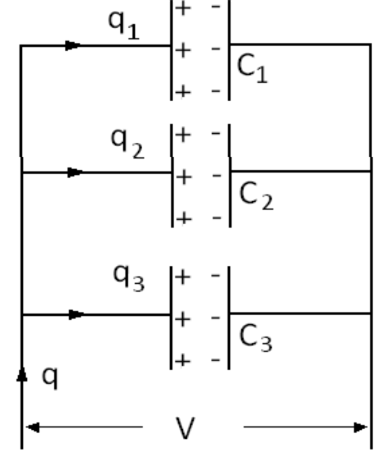CBSE
Class 10 Class 12
Capacitors of capacitance C1, C2,…, Cn can be combined to obtain a system with some effective capacitance C. The effective capacitance depends on the way the individual capacitors are combined.
Combination of capacitors:
When capacitors are connected in parallel, the potential difference V across each is same and the charge on C1, C2 and C3 is different i.e q1, q2 and q3.

The total charge q is given by
q = q1+ q2 + q3
the potential across each capacitor is same thus q1 = C1V
q2 = C2V and q3 = C3V
If C is equivalent capacitance then
q = CV
Thus CV = C1V + C2V + C3V
Or
C = C1 + C2 + C3
Charge on capacitor
Let two capacitors are connected in parallel, let Q be the total charge, Let Q1 be the charge on a capacitor capacity C1 and Q2 be the charge on a capacitor capacity C2.
Since both capacitors have the same potential from formula V = Q/C we get,
The capacitor is said to be connected in series if the charge on each individual capacitor is same.
In this situation,

V = V1 + V2 + V3
If C is the effective capacitance of combination then we know that,